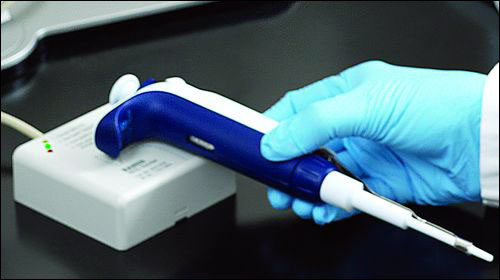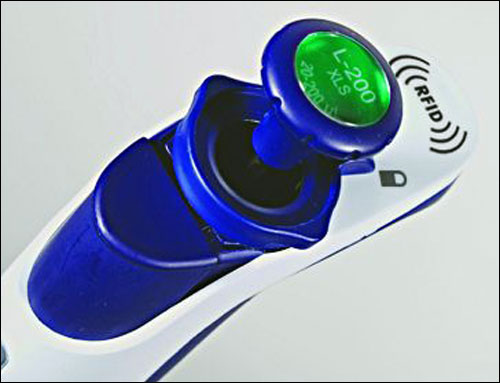Mar 02, 2011Mettler Toledo Rainin, a provider of pipettes used in laboratories around the world, has launched an RFID-enabled family of products. Pipettes—precision tubular instruments for transferring fluids—are utilized by lab workers to manually extract and transfer liquids used for molecular biology, chemical and medical tests. The RFID functionality in the new Pipet-Lite XLS pipettes enables Rainin, as well as its customers (biotechnology and pharmaceutical firms) to track the pipettes' calibration in order to ensure that they meet regulatory compliance. The new offering includes RFID-tagged pipettes, a desktop RFID reader and Rainin's LabX Direct Pipette-Scan software to store data about each pipette as it is used and maintained.
Pipettes are employed not only for transferring liquids from one place to another, but also to measure the exact amount being transferred. Because the equipment requires very precise measurements, pipettes must be calibrated prior to being put into service, in order to comply with standard operating procedures (SOPs) and regulatory agencies. To track the pipettes' calibration and other maintenance processes, labs traditionally use bar-coded labels attached to the devices, text printed on labels that workers must then key into a PC, or handwritten records regarding the pipettes' use and servicing.
Rainin's Pipet-Lite XLS series features not only RFID functionality, but also improved ergonomics (lighter spring forces that require less pressure to push down the device's plunger), and includes both single-channel and multi-channel pipettes (containing one or multiple cylinders, respectively). Each pipette comes with a passive 125 kHz RFID tag made with an NXP Semiconductors Hitag S chip. The tag, built into the pipette's handle, complies with the ISO 11784 and 11785 standards, says Rahul Dabke, product manager at Rainin, which is headquartered in Oakland, Calif. The tag stores a unique ID number, as well as information about the pipette itself, such as its serial number, model number and calibration history. When a user reads the tag with a Rainin RFID interrogator (Dabke declines to name the vendor providing the reader hardware), the data on the tag is forwarded to the LabX Direct Pipette-Scan software, which can be installed on a PC connected to the reader via a USB port. That information can then be shared with authorized parties (such as other labs) or Rainin, or be downloaded to an Excel spreadsheet or Word document.
The tag's 2048 bits of memory can accommodate 256 characters, with some of that memory dedicated to the unique ID number, leaving approximately 192 characters for additional data. The reader sends read data to the LabX Direct software running on that PC, which displays the information to the user. The reader must be held within five centimeters of the tag. The short read range was important, Dabke explains, since it ensures that only a single tag is read at a time when a pipette is in close proximity to others. The tag can store information for use by the biotechnology or pharmaceutical customer, such as in which lab the pipette can be used, or for what purpose. A pipette used in an HIV lab, for instance, could be authorized for use only at that particularsite. When a pipette is read, the PC screen would display details about the permitted usage of that pipette, and with that information lab staff could prevent improper usage off the device.
Some laboratories through Europe, North America and Asia are using the new tags, Dabke says, though these labs have asked not to be named. The system has been commercially available since Jan. 1 of this year.

The price for a tagged pipette is the same as for a non-tagged pipette, Dabke says, while a kit including a handheld reader and associated software costs $500. Users have the option of trying out the software for 30 days prior to purchase (the software, available in 15 languages, costs about $100 when purchased with the reader).
Although the earliest adopters are expected to be biotechnology and pharmaceutical firms, Dabke says, other likely users include government forensics laboratories, health-care companies and academic institutions.



